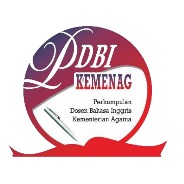Overlap in EFL Learners' Online Casual Conversation: How Men and Women Differ
Abstract
The COVID-19 pandemic is thought to have changed the way people communicate in society. It has ushered in a new way of living that is fully conducted online. It urges this study to concentrate on examining online communications, particularly men's and women's online casual conversations. The qualitative approach was employed to accomplish this. Three basic processes were carried out in greater depth. The first step was to tape the dialogue, which was transcribed using the theory of Eggins & Slade (1997). To strengthen the data, an unstructured interview was conducted (Mackey & Gass, 2005). Finally, to expose the phenomenon of overlap, the data were evaluated using theories proposed by numerous experts, such as Schegloff (2000), Cogo & Dewey (2012), Yule (1996), and many more. The results were afterward developed into rich verbal descriptions. Analysis shows that men's and women's online casual conversations have different patterns of overlap. This can happen because of the influence of what they have received throughout their lives about how to be a man and a woman. The gender values they get from their environment greatly affect how they communicate and interact with others.
Keywords
Full Text:
PDFReferences
Archer, J., & Lloyd, B. (2002). Sex and Gender. New York: Cambridge University Press.
Ary, D., Jacobs, L. C., Sorensen, C. K., & Walker, D. A. (2012). Introduction to Research in Education. Belmont: Thomson Wadsworth.
Bank, B. J. (2007). Gender and Education: An Encyclopedia, Volumes I & II. London: Imprint of Greenwood Publishing Group. https://doi.org/10.1177/009430610903800228
Burr, V. (1998). Gender and Social Psychology. London: Routledge.
Coates, J. (2004). Women, men and language. New York: Routledge.
Cogo, A., & Dewey, M. (2012). Analysing English as aLingua Franca: A Corpus-driven Investigation. London: Continuum International Publishing Group.
Eggins, S. (2005). An Introduction to Systemic Functional Linguistics. New York: Continuum.
Eggins, S., & Slade, D. (1997). Analysing Casual Conversation. London: Creative Print and Design Wales.
Fontecha, A. F. (2010). Gender and Motivation in EFL Vocabulary Production. In R. M. J. Catalan (Ed.), Gender Perspectives on Vocabulary in Foreign and Second Languages. New York: Palgrave Macmillan.
Fraenkel, J. R., Wallen, N. E., & Hyun, H. H. (2012). How to Design and Evaluate Research in Education. New York: McGraw-Hill.
Hyde, J. S., & McKinley, N. M. (1998). Gender Differences in Cognition:Results from Meta-Analyses. In P. J. Caplan, M. Crawford, J. S. Hyde, & J. T. E. Richardson (Eds.), Gender Differences in Human Cognition. New York: Oxford University Press. https://doi.org/10.5860/choice.35-5362
Kiyimba, N., Lester, J. N., & O’Reilly, M. (2019). Using Naturally Occurring Data in Qualitative Health Research. Using Naturally Occurring Data in Qualitative Health Research. https://doi.org/10.1007/978-3-319-94839-3
Lakoff, R. (1973). Language and Woman’s Place. Language in Society, 2(1), 45–79. https://doi.org/10.2307/4166707
Lee, K. (2020). Why do we overlap each other?: Collaborative overlapping talk in english as a lingua franca (elf) communication. Korean Journal of English Language and Linguistics, 2020(20), 613–641. https://doi.org/10.15738/kjell.20..202010.613
Mackey, A., & Gass, S. M. (2005). Second Language Research: Methodology and Design. New Jersey: Lawrence Erlbaum Associates.
Nguyen, M. H., Gruber, J., Fuchs, J., Marler, W., Hunsaker, A., & Hargittai, E. (2020). Changes in Digital Communication During the COVID-19 Global Pandemic: Implications for Digital Inequality and Future Research. Social Media and Society, 6(3). https://doi.org/10.1177/2056305120948255
Nguyen, L. V, & Pham, A. T. D. (2020). The journal of asia tefl. Journal of Asia TEFL, 17(2), 463–478. https://doi.org/10.18823/asiatefl.2020.17.2.10.463
Porter, N. (2005). Psychological Gender Differences: Contemporary Theories and Controversies. In A. Barnes (Ed.), The handbook of women, psychology, and the law. San Francisco: Jossey-Bass A Wiley Imprint.
Ridgeway, C. L. (2011). Framed by Gender: How Gender Inequality Persists in the Modern World. Framed by Gender: How Gender Inequality Persists in the Modern World. New York: Oxford University Press.
Schegloff, E. A. (2000). Overlapping talk and the organization of turn-taking for conversation. Language in Society, 29(1), 1–63. https://doi.org/10.1017/s0047404500001019
Seidman, I. (2006). Interviewing as Qualitative Research: A Guide for Researchers in Education and the Social Sciences. New York: Columbia University. https://doi.org/10.1037/032390
Sunderland, J. (2006). Language and Interaction: an Advanced Resource Book. New York: Routledge.
Tannen, D. (1994). Gender and Discourse. New York: Oxford University Press.
Tannen, D. (2003). Gender and Family Interaction. In J. Holmes & M. Meyerhoff (Eds.), The Handbook of Language and Gender. UK: Blackwell Publishing Ltd.
Teodorovicz, T., Sadun, R., Kun, A. L., & Shaer, O. (2021). Working from Home during COVID- 19 : Evidence from Time-Use Studies. Harvard Business School Working Paper, 21(94), 1–54. Retrieved from https://www.hbs.edu/faculty/Pages/item.aspx?num=59926
Thornburry, S. (2005). Beyond the Sentence: Introducing Discourse Analysis. Oxford: Macmillan Publisher.
Thornbury, S., & Slade, D. (2006). Conversation: From Description to Pedagogy. Cambridge: Cambridge University Press.
Wardhaugh, R., & Fuller, J. M. (2015). An Introduction to Sociolinguistics. UK: Blackwell Publishing Ltd.
Williyan, A. (2020). Exploring EFL Learners’ Casual Conversation. Diadikasia Journal, 1(1), 71–84. https://doi.org/10.21428/8c841009.2db315d6
Williyan, A., & Sirniawati, . (2020). Ict in Distance Learning: Teachers’ Attitudes and Problems. ELT Echo : The Journal of English Language Teaching in Foreign Language Context, 5(2), 119. https://doi.org/10.24235/eltecho.v5i2.6949
Xia, X. (2013). Gender differences in using language. Theory and Practice in Language Studies, 3(8), 1485–1489. https://doi.org/10.4304/tpls.3.8.1485-1489
Yule, G. (1996). Pragmatics. New York: Oxford University Press. https://doi.org/10.4324/9780429424465-5
DOI: http://dx.doi.org/10.29240/ef.v6i1.4109
Refbacks
- There are currently no refbacks.
Copyright (c) 2022 Aldha Williyan

This work is licensed under a Creative Commons Attribution-NonCommercial-ShareAlike 4.0 International License.
INDEXED BY:
 This work is licensed under a Creative Commons Attribution-NonCommercial-ShareAlike 4.0 International License
This work is licensed under a Creative Commons Attribution-NonCommercial-ShareAlike 4.0 International License
@ ENGLISH FRANCA : Academic Journal of English Language and Education
Jl. Dr. AK Gani No 1 Dusun Curup, Rejang Lebong Regency, Bengkulu Province, Indonesia, 39119.
Dr. Eka Apriani, M.Pd., email: efranca@iaincurup.ac.id, eka.apriani@iaincurup.ac.id.




.png)












